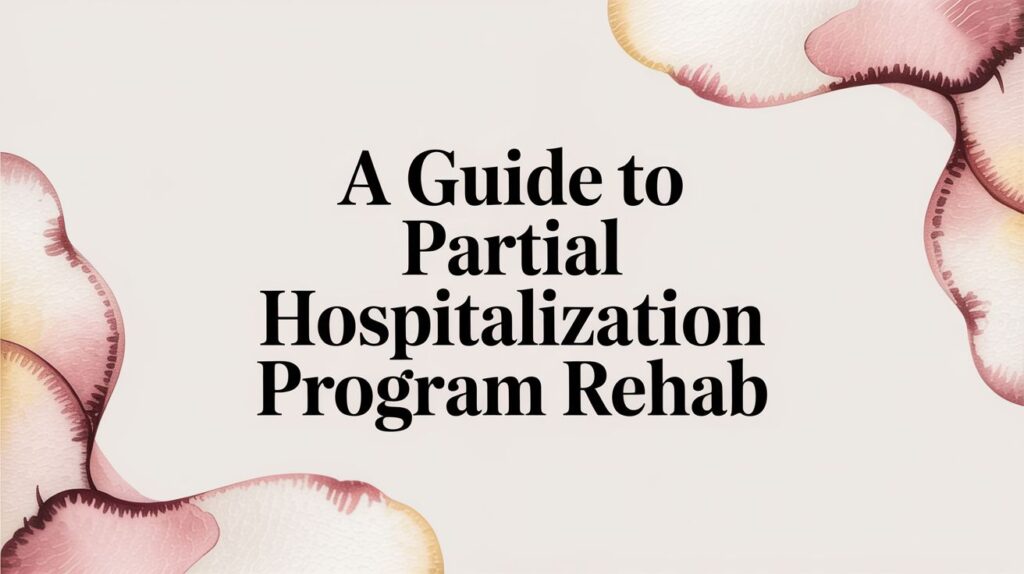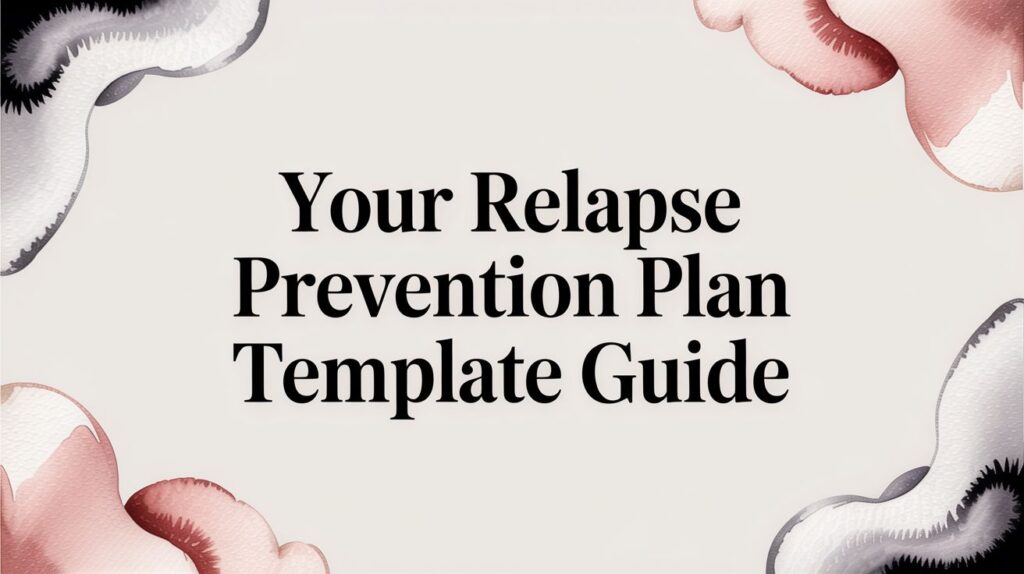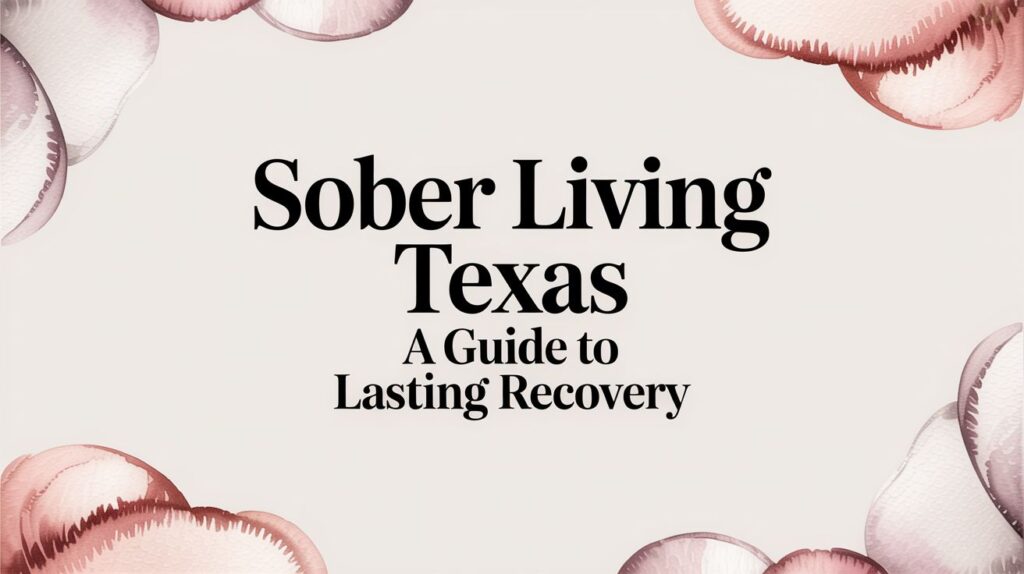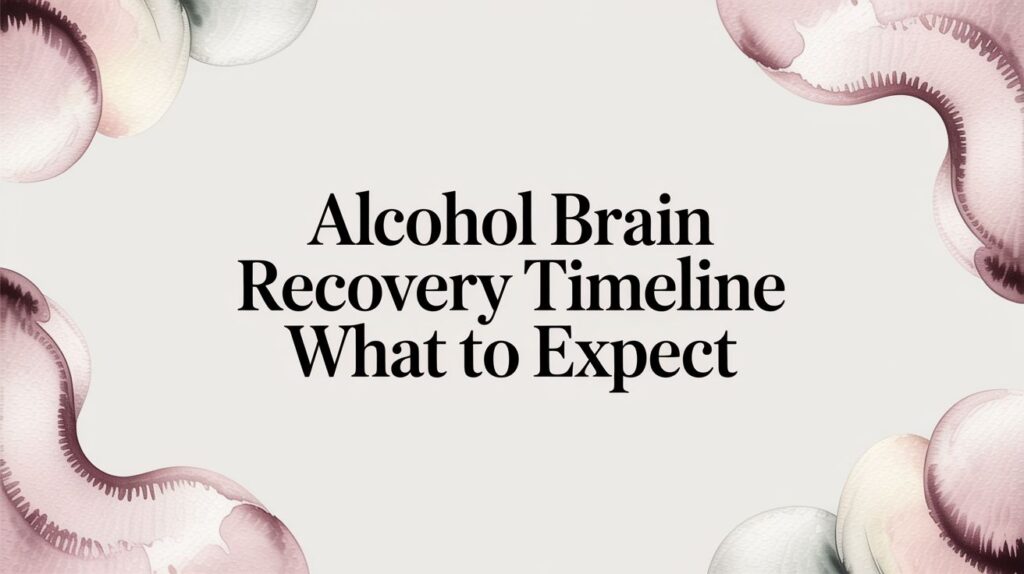A partial hospitalization program, or PHP, offers a powerful, structured path to recovery without requiring you to live at the treatment center. Think of it as a full-time day school for recovery; you get comprehensive therapeutic care during the day and return to the stability of your own home at night. This model provides a critical bridge between 24/7 inpatient care and less frequent outpatient therapy.
What Is a Partial Hospitalization Program?

A Partial Hospitalization Program is an intensive, highly structured form of outpatient treatment. It delivers the same therapeutic intensity you’d find in residential care but allows you to maintain vital connections with your family and community. This unique setup is designed for people who need more support than standard outpatient services can offer but don't require round-the-clock medical supervision.
The core idea is to build an immersive therapeutic environment that fosters accountability and a healthy routine. You'll spend several hours a day, typically five days a week, engaged in a mix of evidence-based therapies and practical skill-building workshops. This approach helps you build a strong foundation for recovery by practicing new coping skills in real time, with a clinical team right there to guide you.
The Role of PHP in the Recovery Journey
PHP serves as a vital middle ground in the continuum of care. For some, it’s a “step-down” option after finishing an inpatient program, offering a structured transition back into daily life. For others, it’s a “step-up” from traditional weekly therapy when more intensive support is needed to manage acute symptoms or prevent a relapse.
A PHP is an ideal choice for individuals who require a high level of structure and support without the complete removal from their home and community that inpatient treatment entails.
The mental health field increasingly recognizes its effectiveness. Data shows that 56.8% of surveyed behavioral health facilities now offer psychiatric partial hospitalization, and 35% provide partial hospital addiction services, cementing its role as a cornerstone of modern treatment. You can learn more about the prevalence of these programs from research compiled by addictionhelplineamerica.com.
This level of care works because it strikes a balance between structured treatment and personal autonomy. You learn to navigate daily triggers and stressors with the immediate backup of a clinical team, strengthening your resilience for long-term sobriety.
To give you a clearer snapshot, here’s a quick breakdown of what a PHP typically involves.
PHP Rehab at a Glance
This table summarizes the core components of a Partial Hospitalization Program for a quick understanding of what it entails.
| Feature | Description |
|---|---|
| Time Commitment | Typically 4-6 hours per day, 5 days per week. |
| Living Situation | You live at home or in a sober living environment. |
| Treatment Intensity | High; includes daily individual and group therapy sessions. |
| Ideal Candidate | Medically stable but needs more structure than IOP. |
| Supervision Level | Clinical supervision during program hours, no 24/7 monitoring. |
This structure ensures you get the robust support needed to make meaningful progress while still applying your new skills in the real world each evening.
Who Is the Ideal Candidate for PHP Treatment?
Figuring out the right level of care for addiction or mental health is a huge decision, and a partial hospitalization program rehab isn’t a one-size-fits-all fix. It’s built for people at a very specific point in their recovery journey—those who need more support than a weekly therapy session but are stable enough that they don’t need 24/7 supervision.
Think of it like physical therapy after a big surgery. You’re out of the hospital, but you’re definitely not ready to hit the gym on your own once a week. You need intensive, daily sessions with a pro to rebuild strength and make sure you heal right. That’s exactly the role a PHP plays in recovery.
The only way to know for sure is through a clinical assessment. A professional will look at several key areas to make sure a PHP offers the right mix of structure and support for you to succeed.
Key Factors for PHP Eligibility
Before recommending a PHP, a clinical team looks for a specific blend of needs and circumstances. The whole point is to match someone with care that’s intense enough to create real change but flexible enough that they can start weaving it into their daily life.
Ideal candidates for a PHP usually:
- Are Transitioning from Inpatient Care: Many people "step down" from a residential program. They’ve got their feet under them with initial sobriety and are medically stable, but they need a safety net as they transition back to the real world. PHP provides that crucial structure during a very vulnerable time.
- Need More Than Outpatient Can Offer: For others, a PHP is a "step up." If weekly therapy just isn't cutting it—symptoms are getting worse, a relapse feels close, or a crisis is brewing—a PHP delivers the daily therapeutic punch needed to get things back on track.
- Have a Safe and Supportive Home Environment: Because you go home every night, a stable living situation is a must. Your home should be a place that supports your recovery, not one filled with triggers.
- Are Medically Stable: PHP candidates don’t require around-the-clock medical monitoring or detox. Any severe withdrawal symptoms have to be managed before starting the program.
- Struggle with Co-Occurring Disorders: People dealing with both a substance use issue and a mental health challenge like anxiety, depression, or trauma often do incredibly well in a PHP. The integrated model tackles both conditions at the same time. For a deeper dive, our guide on dual diagnosis treatment programs has some great insights.
Scenarios Where PHP Is the Right Choice
To make this a bit more concrete, let’s look at a couple of examples. Imagine a young adult who just finished a 30-day residential program. They need help applying all their new coping skills to the real-world pressures of college and their social life. A PHP offers the daily structure and peer support to build that bridge.
Or consider a working professional whose struggles with alcohol and anxiety have gotten worse. They don't need to be hospitalized, but they know a once-a-week therapy session isn’t enough to make a real difference. A PHP lets them get intensive treatment while still living at home and staying connected to their family.
A partial hospitalization program is for someone who is motivated to actively participate in their recovery and can manage their evenings and weekends responsibly, but still benefits from a high-contact, structured therapeutic environment during the day.
Ultimately, the decision comes down to a careful clinical evaluation. This assessment makes sure that a partial hospitalization program rehab isn't just a good option, but the best option to support lasting, sustainable recovery.
A Typical Day in a Partial Hospitalization Program
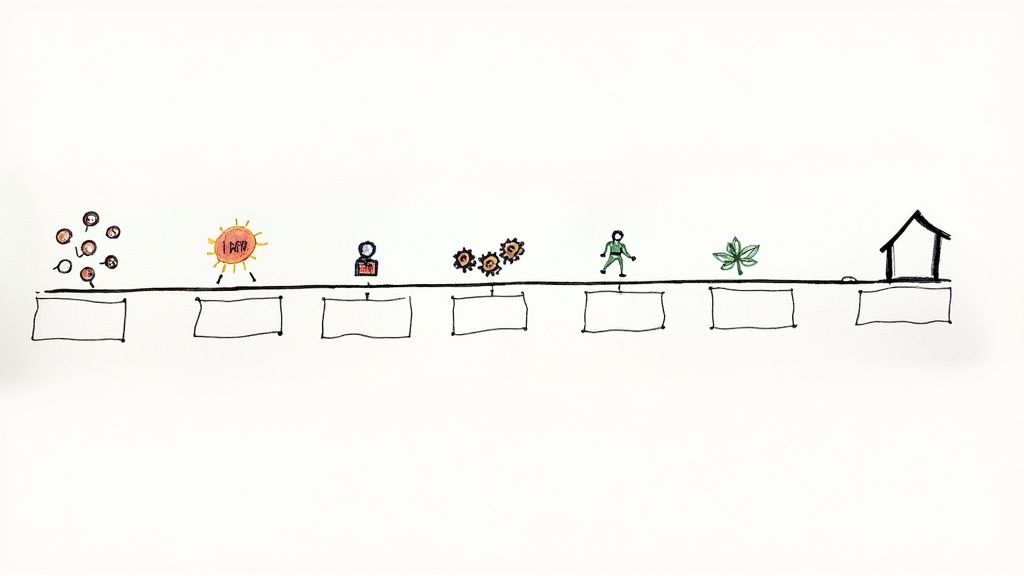
The idea of walking into a partial hospitalization program rehab can feel a bit daunting. Most of that anxiety comes from the unknown. But the reality is that PHP isn’t designed to feel like a hospital at all—it’s a structured, supportive space dedicated entirely to healing and growth.
Think of the daily schedule as the backbone of your recovery. It creates a predictable, grounding routine that helps you focus. While every program has its own rhythm, most follow a similar framework built around intensive therapy, practical skill-building, and invaluable peer support.
You’ll typically spend four to six hours a day, five days a week, at the center. This consistent commitment is key to breaking old, destructive cycles and building new, healthy habits in their place. Let’s walk through what a day often looks like.
Morning Focus on Connection and Insight
Your day will likely kick off with a group check-in. This is a chance to share how you’re feeling, talk through any hurdles from the night before, and set your intentions for the day ahead. It’s a powerful way to build accountability and remember you’re not on this path alone.
From there, you’ll usually dive into a more focused group therapy session led by a licensed therapist. These groups tackle topics that are absolutely vital for recovery, like learning to manage triggers, navigating complex family dynamics, or rebuilding a sense of self-worth.
- Group Therapy: These sessions are safe spaces where you can process tough emotions and hear from others who truly get what you're going through. That shared experience is what builds a rock-solid support network.
- Individual Counseling: Most schedules carve out dedicated one-on-one time with your primary therapist. This is where you can go deeper into personal issues and get personalized guidance tailored to your specific recovery goals.
These morning hours are all about fostering self-awareness and laying the groundwork for real, meaningful change. You can get a better feel for these discussions by reading about different group topics for addiction recovery.
Afternoon Skills Building and Practical Application
After a lunch break, the focus of the day shifts. The afternoon is less about introspection and more about rolling up your sleeves to learn tangible skills you can start using right away. This is where the "real-world" value of PHP really comes to life.
These sessions often take the form of educational workshops or interactive groups. The whole point is to give you a toolbox of coping strategies, so you can handle life’s challenges without falling back on old habits.
A PHP day is intentionally designed to balance deep emotional work with practical, real-world skills. You don't just figure out the 'why' behind your addiction; you learn the 'how' of staying sober for good.
Here’s a taste of what you might do in the afternoon:
- Relapse Prevention Workshops: You’ll pinpoint your personal triggers and create a concrete action plan for dealing with cravings and high-risk situations.
- CBT or DBT Skills Groups: These groups teach you practical techniques for challenging negative thought patterns and managing overwhelming emotions in a healthy way.
- Holistic Therapies: Many programs weave in activities like mindfulness meditation, yoga, or art therapy to help reduce stress and promote your overall well-being.
The day usually ends with a wrap-up session, giving you a chance to reflect on what you learned and get ready for the evening. This blend of structure and support is the heart of a partial hospitalization program rehab—it delivers the intensity you need to change while letting you go home each night to practice what you’ve learned.
Core Therapies Used in PHP Rehab
A partial hospitalization program is much more than a place to stay sober during the day. It's an active, clinical environment where you learn the skills to dismantle the very foundations of addiction. The heart of this process is a powerful mix of evidence-based therapies designed to tackle not just the symptoms of substance use, but the reasons it took hold in the first place.
Think of it this way: addiction often rewires how we think, feel, and react to the world. Effective therapy provides the tools to rewire it back. Each approach used in a PHP acts like a specific tool for a different part of the job, from challenging distorted thoughts to managing overwhelming emotions. This integrated strategy ensures you're building a strong, resilient foundation for a recovery that lasts.
Rewiring Unhelpful Thought Patterns with CBT
One of the cornerstones of modern therapy you’ll definitely encounter is Cognitive Behavioral Therapy (CBT). At its core, CBT works on a simple but profound idea: our thoughts, feelings, and behaviors are all linked. If we can identify and change destructive thought patterns, we can change how we act.
Imagine a recurring thought like, "I'll never be able to handle stress without a drink." CBT gives you the tools to catch that thought, examine the evidence for and against it, and reframe it into something more realistic and empowering, like, "I am learning new, healthier ways to cope with stress every day." It's a hands-on, practical approach that puts the power back in your hands, letting you challenge the automatic negative thinking that so often fuels substance use.
Building Skills to Manage Powerful Emotions with DBT
While CBT hones in on thoughts, Dialectical Behavior Therapy (DBT) is brilliant at helping you manage the kind of intense emotions that can feel completely overwhelming. It was originally developed to treat borderline personality disorder, but its skill-based approach has proven incredibly effective for addiction, especially for people navigating co-occurring mental health conditions.
DBT is built on four key skill modules you’ll learn and practice:
- Mindfulness: Learning to stay grounded in the present moment without judgment.
- Distress Tolerance: Getting through crisis situations without making things worse.
- Emotion Regulation: Understanding your emotions and learning how to manage them in a healthy way.
- Interpersonal Effectiveness: Building skills to communicate your needs and maintain strong, healthy relationships.
These aren't just abstract concepts. You’ll actively practice them in group and individual sessions, building a tangible toolkit for navigating life’s inevitable ups and downs without turning back to old habits.
Addressing Trauma with Specialized Treatments like EMDR
For many people, unresolved trauma is a significant driver behind their addiction. A quality partial hospitalization program rehab will offer specialized therapies to address this head-on, like Eye Movement Desensitization and Reprocessing (EMDR). This therapy helps the brain properly process traumatic memories that have gotten "stuck," reducing their emotional power.
By healing these deep-seated wounds, EMDR can dramatically reduce the triggers and cravings tied to past trauma. This frees you up to focus on building a healthier future. Some PHPs also integrate other powerful modalities, like Solution Focused Therapy, which shifts the focus toward identifying and building on your personal strengths and resources.
The Role of Medication Management and Dual Diagnosis Care
Substance use disorders very often coexist with mental health conditions like depression, anxiety, or PTSD. When this happens, it's called a dual diagnosis, and a comprehensive PHP provides integrated care to treat both conditions at the same time. This frequently involves medication management, where a psychiatrist evaluates your needs and may prescribe medications to stabilize your mood, reduce cravings, or manage withdrawal symptoms.
This medical support is a critical piece of the puzzle, working in tandem with psychotherapy to create stability. When combined, these therapies create a powerful synergy. The results speak for themselves: overall, 85% to 95% of people who complete rehab report being drug-free nine months later, with about 80% reporting a better quality of life.
Another key therapy that helps build the internal drive for change is motivational interviewing. You can find out more in our article on what is motivational interviewing therapy. By combining these proven methods, a PHP doesn't just help you stop using—it equips you to build a fulfilling life in recovery.
Comparing PHP with Other Levels of Care
When you’re looking at addiction treatment, it helps to understand the full spectrum of options. Figuring out the right level of care can feel complicated, but it gets much clearer if you think of it like different kinds of academic support.
Inpatient care is the full-time boarding school—total immersion with 24/7 supervision. On the other end, an Intensive Outpatient Program (IOP) is like focused after-school tutoring, giving you targeted support a few times a week.
A partial hospitalization program rehab fits perfectly in the middle. Think of it as the rigorous day school of recovery. You get a high-intensity therapeutic education during the day, but you go home each evening to practice what you’ve learned in the real world. This unique structure makes it an ideal “step-down” from inpatient care or a vital “step-up” when less frequent outpatient therapy isn’t enough.
PHP vs Inpatient Residential Treatment
The biggest difference between a PHP and inpatient care comes down to the living situation. Inpatient programs require you to live at the treatment facility around the clock. This creates a highly controlled, trigger-free environment, which is absolutely essential for anyone who is medically unstable, needs detoxification, or has a home life that’s unsafe for recovery.
A PHP, on the other hand, delivers a high level of clinical care during the day while letting you sleep in your own bed at night. This setup is best for people who are medically stable and have a supportive home environment. It gives you a crucial chance to practice new coping skills in real time, facing everyday challenges with the immediate backup of a clinical team. You don’t just learn recovery theory; you actively live it out.
PHP vs Intensive Outpatient Program (IOP)
An Intensive Outpatient Program (IOP) is a step down in intensity from a PHP. While a PHP usually requires 20-30 hours of treatment each week, an IOP typically involves just 9-12 hours spread across three or four days.
An IOP is a fantastic option for people who have already built a solid foundation in recovery and need continued support as they reintegrate into work, school, and family life. A PHP is more appropriate when you need more structure and daily therapeutic contact to manage symptoms and prevent relapse. The daily commitment of a partial hospitalization program rehab helps you build a strong routine and gives you the momentum needed for major breakthroughs in early recovery.
For a deeper dive into how these different programs work, our article explaining what is rehab offers some great context.
The infographic below shows how the core therapies used in a strong PHP—like CBT, DBT, and EMDR—work together to build a comprehensive treatment plan.

This visual shows how these foundational therapies build on one another to create a solid and effective plan within a PHP setting.
Comparing PHP, Inpatient, and IOP Rehab Programs
To make an informed decision, it helps to see the key differences laid out side-by-side. The table below breaks down the time commitment, living situation, and ideal candidate for each level of care.
| Feature | Inpatient/Residential | Partial Hospitalization (PHP) | Intensive Outpatient (IOP) |
|---|---|---|---|
| Living Situation | Live at the facility 24/7 | Live at home or in sober living | Live at home or in sober living |
| Time Commitment | 24 hours a day, 7 days a week | 4-6 hours a day, 5 days a week | 3-4 hours a day, 3-4 days a week |
| Supervision | Constant medical and clinical | Clinical supervision during program hours | Limited clinical supervision |
| Best For | Medical instability, detox, or an unsafe home environment | Needing structure and intensive therapy without 24/7 residential care | Transitioning back to daily life with continued support |
Ultimately, choosing between PHP, inpatient, and IOP isn’t about which one is "better," but which one is the right fit for you at this specific moment in your recovery journey.
Navigating Insurance Coverage and Costs for PHP
Let's be honest: one of the biggest hurdles to getting help is worrying about the cost. The good news is that a partial hospitalization program rehab is widely recognized as a medical necessity. Because of that, most major health insurance plans will cover it.
This isn't just a courtesy—it's the law. The Affordable Care Act (ACA) lists mental health and substance use disorder services as essential health benefits. That means your insurance provider is required to cover PHP treatment just like they would any other medical procedure, from surgery to an emergency room visit.
Of course, the exact amount of coverage can vary wildly from one plan to the next. The first step toward clarity is getting familiar with the language of insurance.
Verifying Your Benefits and Understanding Key Terms
Before you commit to any program, it’s critical to contact your insurance provider directly. Better yet, have the treatment center’s admissions team do it for you. This process, called verification of benefits, clears up exactly what your financial responsibility will be.
You’ll want to get a handle on a few common terms:
- Deductible: This is the amount you have to pay out-of-pocket for medical care before your insurance plan starts chipping in.
- Copay: A flat fee you pay for a specific service, like a doctor's visit, after your deductible has been met.
- Coinsurance: Once you've met your deductible, this is the percentage of the total cost you're still responsible for paying.
Getting these numbers upfront prevents sticker shock and lets you plan your finances. When you're trying to make sense of your options, understanding HMO vs. PPO plans can also make a huge difference in what you'll pay and which providers you can see.
Questions to Ask Your Insurance Provider
To feel empowered in this process, you need the right information. Whether it’s you or the admissions team on the phone with your insurance company, have a list of specific questions ready to go.
Taking the time to understand your policy is not just about managing costs; it’s about reducing stress so you can focus entirely on your recovery.
Here are the essential questions you need to ask:
- Does my plan specifically cover partial hospitalization programs for both substance use and mental health?
- Is this particular treatment facility considered in-network with my plan?
- What is my annual deductible, and how much of it have I already paid this year?
- What will my copay or coinsurance be for each day of PHP services?
- Do I need to get pre-authorization before I can start treatment?
- If a claim is denied for any reason, what is the process for an appeal?
Arming yourself with these answers helps demystify the financial side of things, making high-quality care for a partial hospitalization program rehab feel much more manageable and within reach.
How to Choose the Right PHP for Your Needs
Picking a partial hospitalization program rehab is a huge decision, and let's be honest, not all programs are built the same. Finding the right fit is about so much more than location or convenience; it’s about making sure the program’s entire approach—from its staff and therapies to its core philosophy—clicks with you.
Think of it like hiring a specialist for the most important project of your life: your recovery. You need to ask the tough questions and look under the hood to make sure they have exactly what you need to succeed. A slick brochure doesn't tell the whole story. What really matters are the details like staff credentials, therapeutic models, and what happens after you complete the program.
Questions to Ask a PHP Provider
To feel confident in your choice, you need to have a real conversation with an admissions coordinator or clinical director. Use this checklist to guide you. Their answers (or lack thereof) will tell you everything you need to know.
A good program will be totally transparent and happy to get into the details.
What are the credentials of the clinical staff? You're looking for a team of licensed professionals—therapists (LPCs, LCSWs), psychiatrists (MDs), and certified addiction counselors (CACs). A diverse, highly qualified team is a clear sign that you’ll be getting quality, evidence-based care.
What is the therapist-to-patient ratio? This is a big one. A lower ratio, something like one therapist for every 8-10 patients, means you get more focused, personal attention in both group sessions and one-on-ones. It’s the difference between being a name and just being a number.
How do you treat co-occurring disorders? If you're dealing with a dual diagnosis like anxiety and alcohol use, this question is non-negotiable. Ask them to walk you through their integrated treatment approach. Do they have a psychiatrist on staff for medication management? Do they offer specialized therapies for trauma, like EMDR?
What does your aftercare planning process involve? Recovery is a marathon, not a sprint, and it certainly doesn't end the day you leave PHP. A top-tier program starts planning your transition from day one. They should be actively helping you line up ongoing support, whether that’s connecting you with a therapist, support groups, or sober living options.
Evaluating the Program’s Environment and Approach
Beyond the clinical checklist, you have to consider the vibe. The environment and the program’s overall philosophy are just as critical. You need to feel safe, respected, and supported enough to do the hard work of healing.
Choosing a PHP is a deeply personal decision. The right program should not only offer evidence-based treatment but also foster a sense of safety and community where you feel empowered to heal and grow.
Consider these final points:
- Family Involvement: How do they bring your family into the process? A strong support system is one of the most powerful tools in recovery, and good programs know how to leverage it through family therapy or educational workshops.
- Flexibility and Scheduling: Does the program work with your life? Offering different options, like day or evening sessions, shows they understand that people have jobs, families, and other commitments.
- Success Metrics: How do they measure what a successful outcome looks like? While recovery is unique to each person, a program should be able to talk about its goals and how it helps clients build a foundation for long-term sobriety.
By digging in with these targeted questions, you can cut through the marketing fluff and choose a partial hospitalization program rehab that gives you the best possible shot at a new life.
At Altura Recovery, we believe in total transparency and truly personalized care. Our team is here to answer every single one of your questions and help you figure out if our flexible PHP—with its integrated dual-diagnosis treatment and robust aftercare planning—is the right launchpad for your journey. Learn more about our approach to sustainable recovery by visiting us at https://www.alturarecovery.com.

